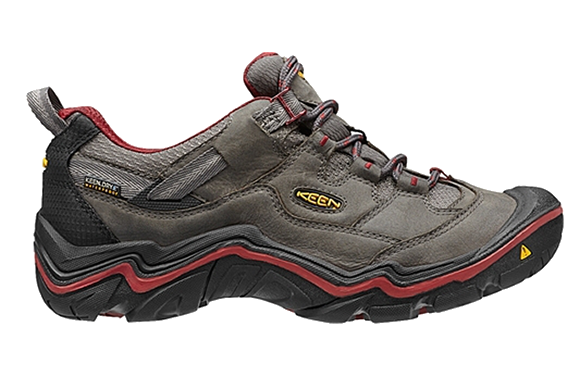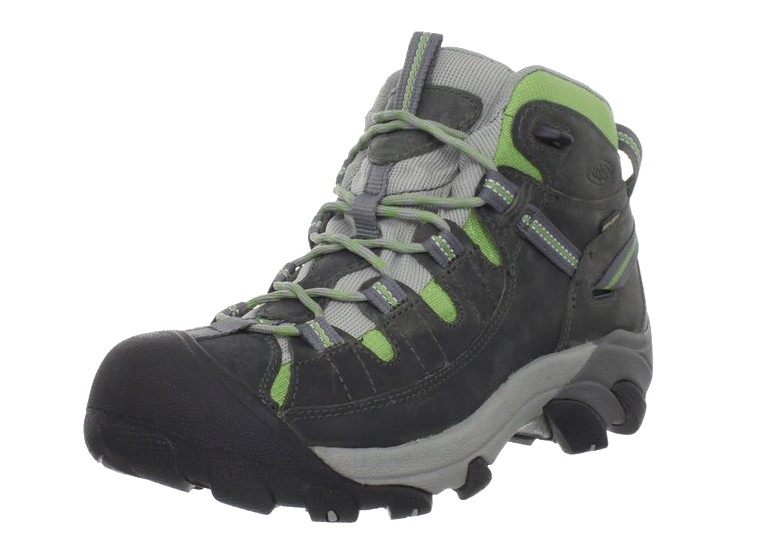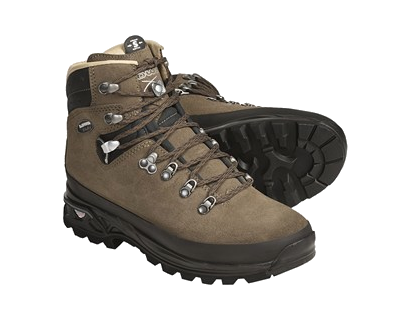What to Look for
Hiking boots come in three general types, light-weight, medium-weight and heavy-weight. The light-weights (Fig. A) are usually not made of all leather. Most will have leather toes and sides but the uppers will consist of a canvas-like material that is light weight and breathable. These boots are generally good for day hiking and short trips but they won't provide much in the way of support for long trips. If, however, you're only hiking on well traveled trails these will do just fine. Medium-weight boots (Fig. B) will have leather toes, sides, and uppers. They tend to be sturdier and provide more support than the canvas-like material on lighter boots. These boots are designed for backpacking trips of about a week or more with a fair amount of weight in your pack. The heavy-weight boots (Fig. C) are made for long trips, heavy packs, and lots of banging around. They are full leather boots with additional leather sewn into the toe area, sides, and heels. You won't need these if you are just a beginner, but if you take up serious of-trail backpacking, you might want a pair.

|

|

|
You must get a good fit on your boots for them to work well. When you go to buy boots, go late in the afternoon (your feet swell somewhat late in the day) and take some boot socks with you. If you try on boots with thin cotton socks you probably won't get the fit you're after. Once you have the boots on, walk around a bit in the store. You might even try placing a lot of pressure in the toe area to help simulate hiking down a hill. If you toes touch the front of the boot, they are too short. If this happened while you were hiking, you may develop blisters on your toes from the rub against the front of your boot.
"Should I buy a boot with Gore-tex"? Gore-tex is a water-proof fabric that breathes well. In other words, sweat from your feet can leave but water from the outside can't get in. Some of the experts I consulted in creating this segment suggested that Gore-tex boots really don't help all that much and a good pair of medium-weight all leather boots will do about the same thing. Leather can be waterproofed and it does breathes some. However, if not treated and allowed to get wet, they can stay wet for awhile.